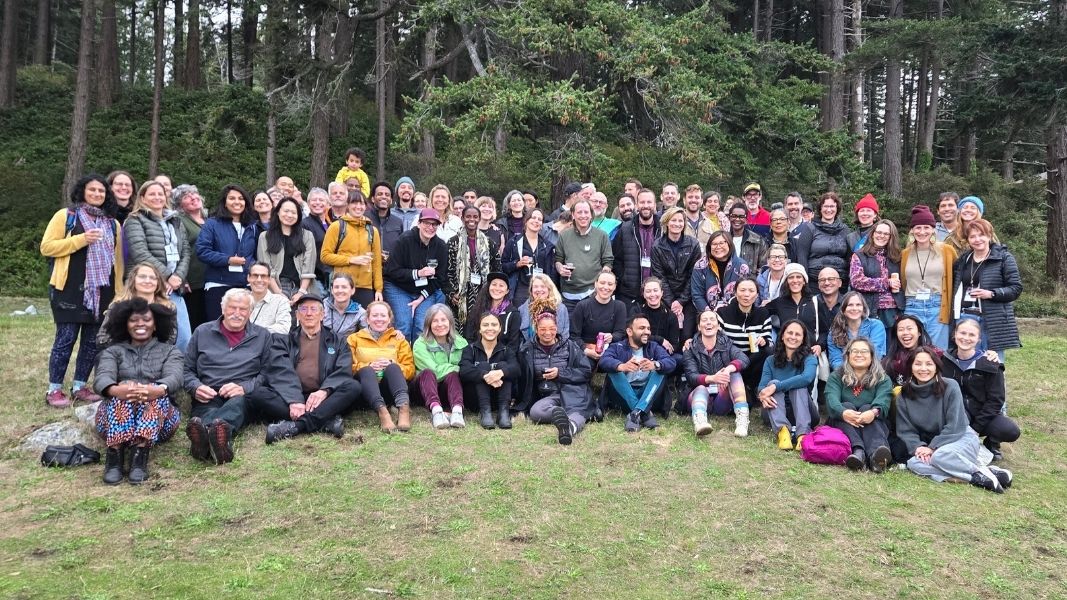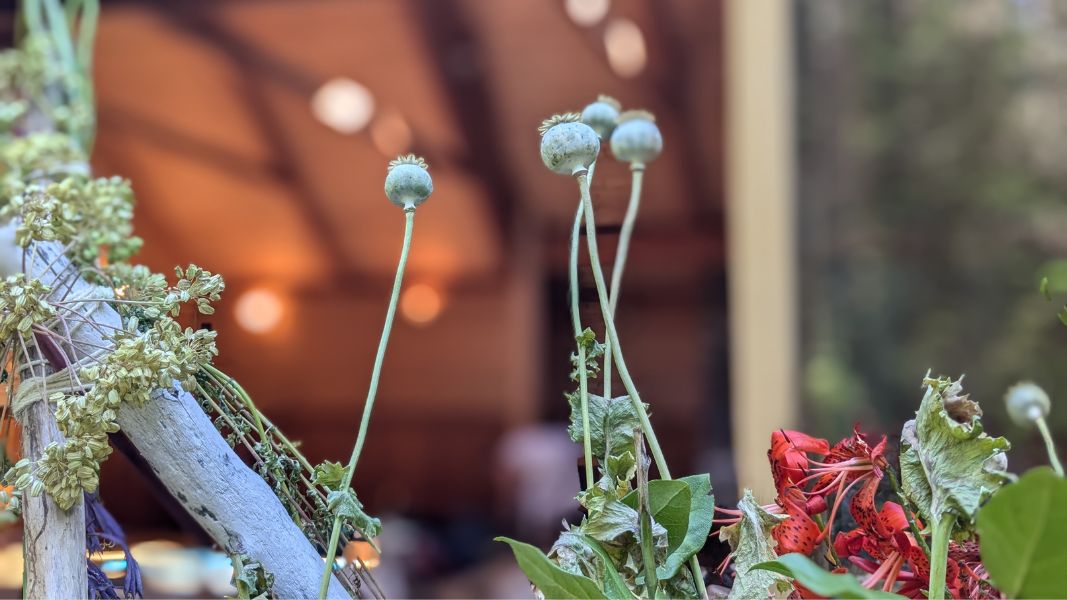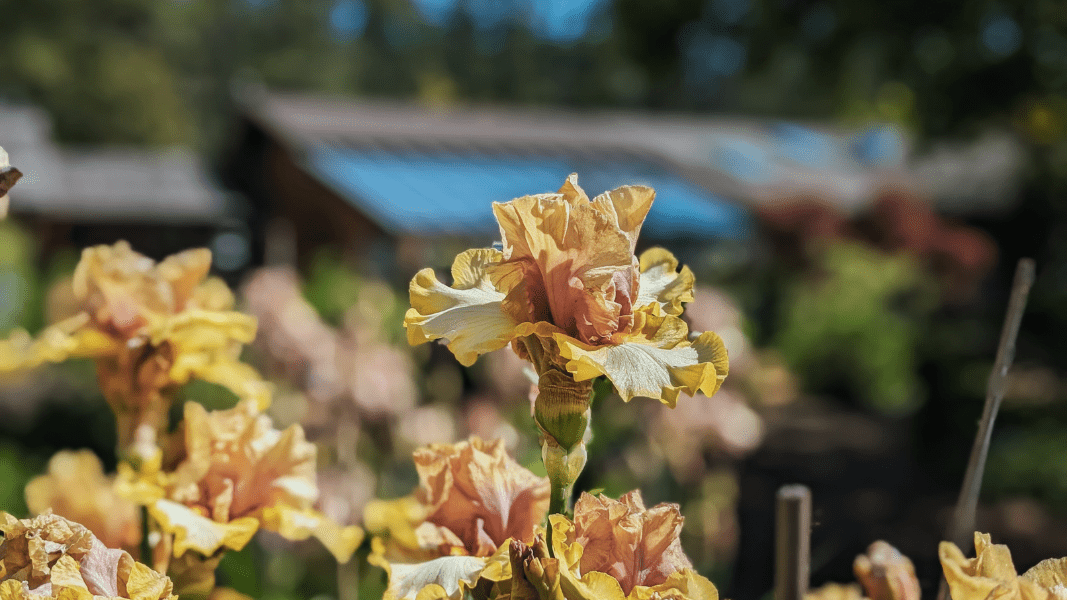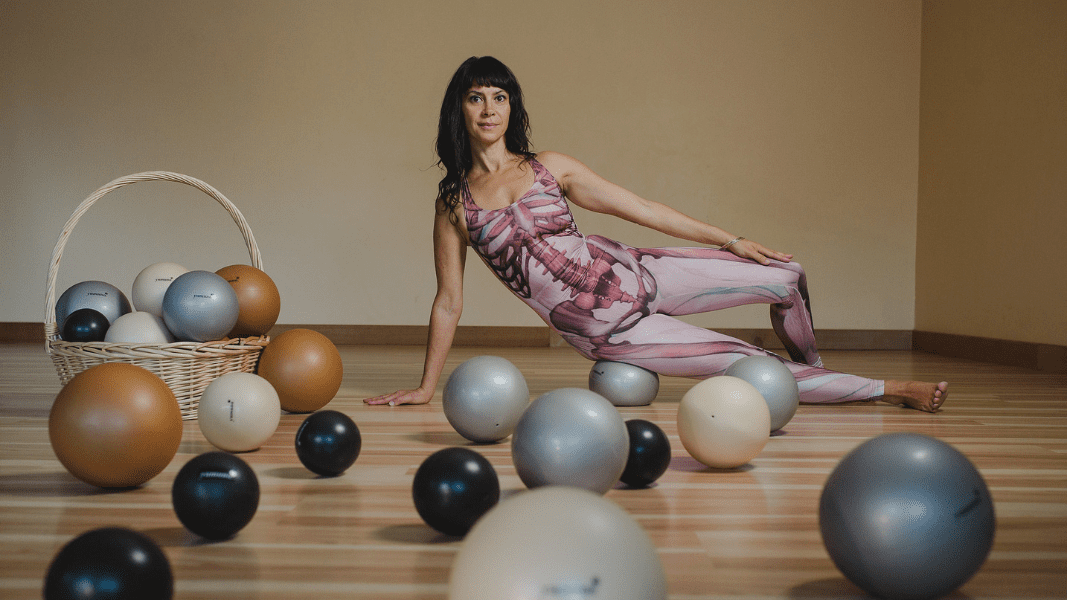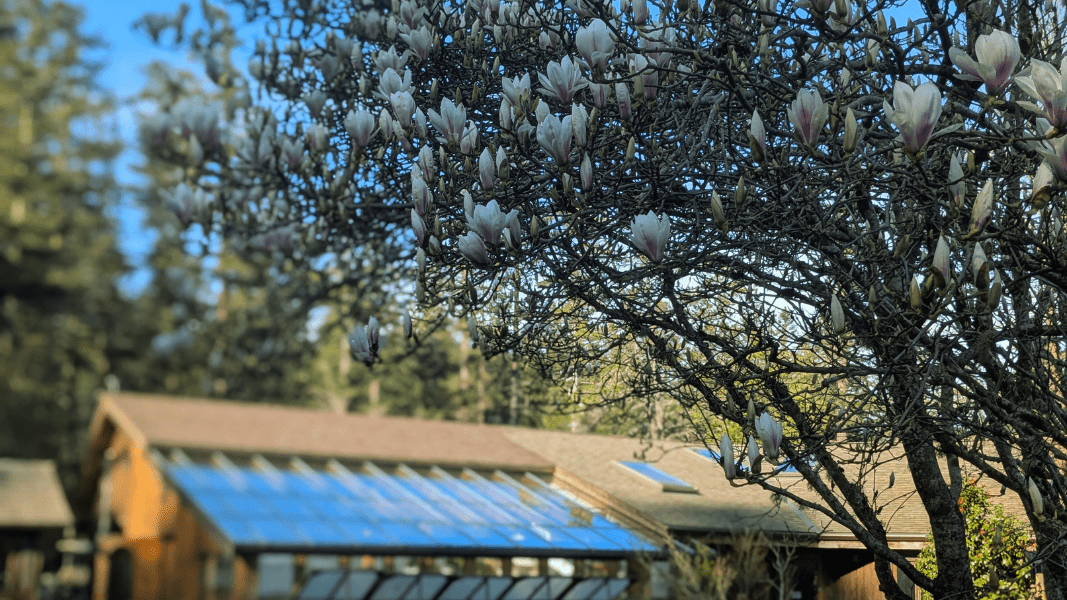Feature photo credit: Oatmeal with a fork
I made this hack last night, as it was time to clean out the veggie drawer. I had wanted to go to the store and pick up a fresh batch of veggies, but my fiance convinced me to use what we had on hand. And low and behold, we made one of my favourite veggie dishes that we have enjoyed all winter!

The simple roasting of veggies is one of our staple inclusions in meals at Hollyhock. It allows the natural sugars and unique flavor of all veggies to develop and shine, and it’s a simple food that can showcase seasonal abundance and be enjoyed universally.
In my fridge I happened to have a ½ bunch of asparagus, 2 red beets, 2 russet or baking potatoes, ½ yellow onion, 3 mushrooms and a handful of carrot sticks.
As we took a taste of each veggie, the various flavors stood out quite prominently and we enthusiastically remarked on the joy of so many flavors, and best of all a clean fridge and no waste of food!
Below you’ll find some general veggie roasting tips, followed by a step-by-step recipe guide.
General Tips for Roasting Mixed Vegetables
How to Season
Toss your vegetables with oil and season with salt and pepper before roasting. Slick them with oil, choosing olive, coconut, or peanut if you want to taste it, or safflower or grapeseed if you don’t. Season with salt and pepper.

Roasting Sheets
Spread the vegetables out on a baking sheet, in an oven-proof skillet, or in a baking dish. Make sure they are in a single layer with a little space in between; if they are too crowded, the vegetables will steam instead of roast. I like to use a sheet of parchment on a rimmed ½ stainless steel sheet pan. This makes for easy clean-up, another important part of the process!
Ways to Roast
You have 3 options for roasting a variety of veggies:
- Roast vegetables individually: First, and easiest, you can roast the individual vegetables on separate trays and combine them after roasting. This lets you monitor how quickly each vegetable is cooking and pull each vegetable from the oven as it’s done.
- Pair “vegetable friends”: Second, you can pair together “vegetable friends” — ones that roast at roughly the same rate. For instance, you could roast cauliflower and broccoli together, or butternut squash with potatoes. Combine these on the same baking sheet and roast them together. If the baking sheet is getting crowded, split them between two sheets.
- Roast in stages: Third, you can add different vegetables to the baking sheet in stages — start roasting the hardest, longest-cooking vegetables first, and then add softer, quicker-cooking vegetables later on. If the baking sheet starts to get full, split the vegetables between two pans so you don’t crowd them. Aim to have all the vegetables finish roasting around the same time, and remember: A little extra roasting time is unlikely to hurt.
Roasting Temperature
The key to roasting all kinds of vegetables is to know the right temperature for cooking them. Dense, low-moisture vegetables (like the roots and squashes) need lower heat and more time in the oven than vegetables with more moisture, like eggplant or zucchini.
Roast at higher heat (450 degrees) for vegetables with a high moisture content — peppers, mushrooms, eggplant, broccoli et al. — and slightly lower (425 degrees) for denser roots and squashes.
Roasting Times
Cooking times are for roasting vegetables at 425°F.

- Root vegetables (beets, potatoes, carrots): 30 to 45 minutes, depending on how small you cut them
- Winter squash (butternut squash, acorn squash): 20 to 60 minutes, depending on how small you cut them
- Crucifers (broccoli, cauliflower, Brussels sprouts): 15 to 25 minutes
- Soft vegetables (zucchini, summer squash, bell peppers): 10 to 20 minutes
- Thin vegetables (asparagus, green beans): 10 to 20 minutes
- Onions: 30 to 45 minutes, depending on how crispy you like them
- Tomatoes: 15 to 20 minutes
“Clean out the Fridge” Roast Veggies | Serves 2-4 people
Ingredients
- 1 to 2 pounds any vegetables
 1 tablespoon olive oil
1 tablespoon olive oil- 1 teaspoon salt
- 1/4 teaspoon & fresh ground black pepper
Equipment
- Mixing bowl
- Measuring spoons
- Spatula
- Baking sheet, oven-safe skillet, or baking dish
Instructions
- Heat the oven to 425°F with a rack in the middle position.
- Chop up the vegetables. Peel the vegetables if desired, then cut into uniform pieces so they cook evenly. Smaller pieces will cook more quickly; larger pieces will take a bit longer to cook. If your vegetables still have some moisture after washing, be sure to pat them as dry as possible; the drier the vegetable, the better it will roast.
- Toss the vegetables with olive oil and salt. Transfer the vegetables to a large bowl. Add the oil, salt, and pepper and toss to combine. Add more oil if the vegetables still look dry or don’t seem evenly coated.
- Spread onto a baking sheet. Spread the vegetables out on a baking sheet, in an oven-proof skillet, or in a baking dish. Make sure they are in a single layer with a little space in between; if they are too crowded, the vegetables will steam instead of roast.
- Estimate your cooking time. In general, softer vegetables, like green beans and cauliflower, will cook in 10 to 20 minutes, and tough, hard vegetables, like winter squash and potatoes, will take 30 minutes or longer. Large pieces will also take longer to cook than smaller pieces.
- Roast the vegetables until tender. Place the vegetables in the oven and begin roasting. Check and stir the vegetables every 10 to 15 minutes. Continue roasting until the vegetables are easily pierced with a fork or knife and they are showing crispy, charred bits at the tips and edges.
- Serve immediately. Transfer the vegetables to a serving dish and taste; sprinkle with additional salt or pepper if needed. Serve while still hot.
Add-ons: You can top your roasted vegetable with a couple of fried eggs or a dollop of yogurt, or both, and you have a full meal. You can switch up the oil and use something more neutral such as coconut or safflower. You can easily add fresh or dried herbs or a bit of vinegar or garlic.
Enjoy!

 1 tablespoon olive oil
1 tablespoon olive oil